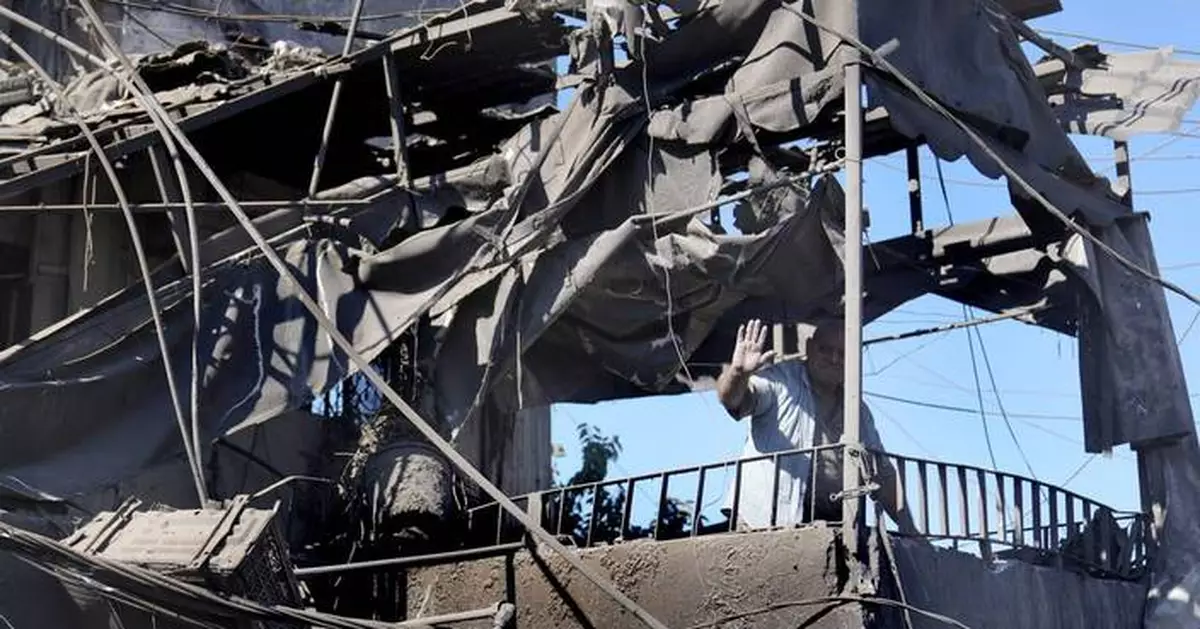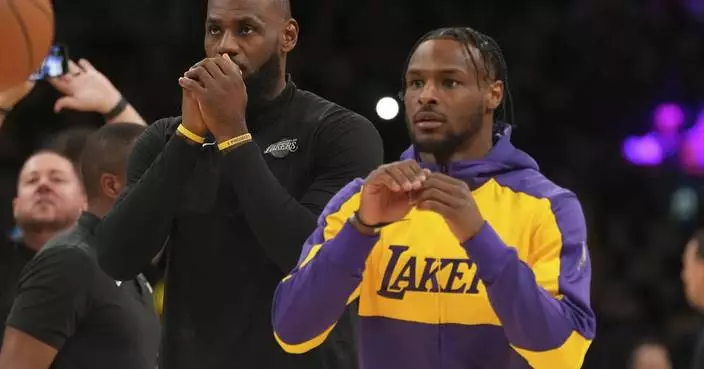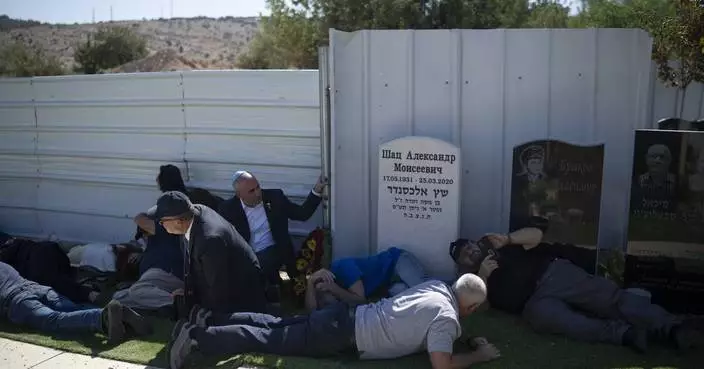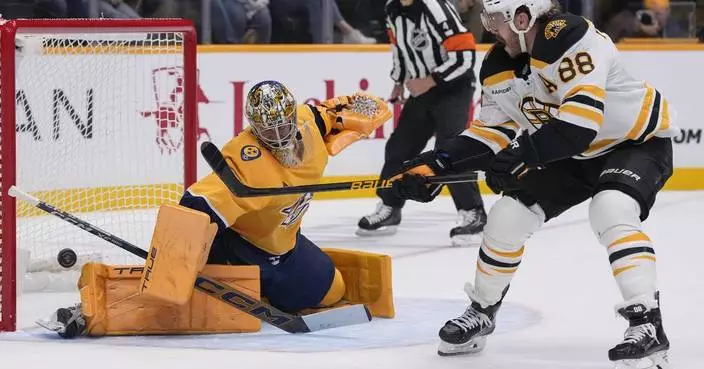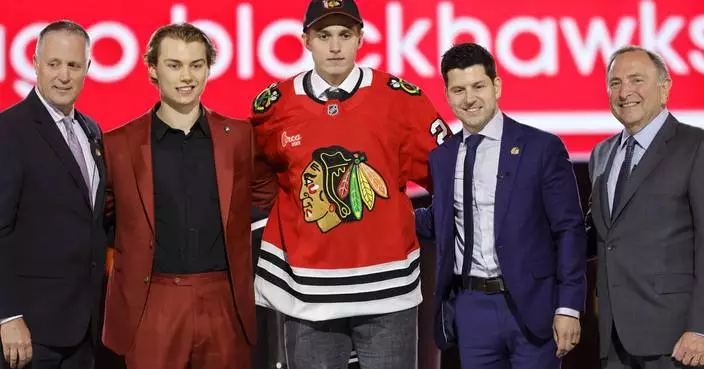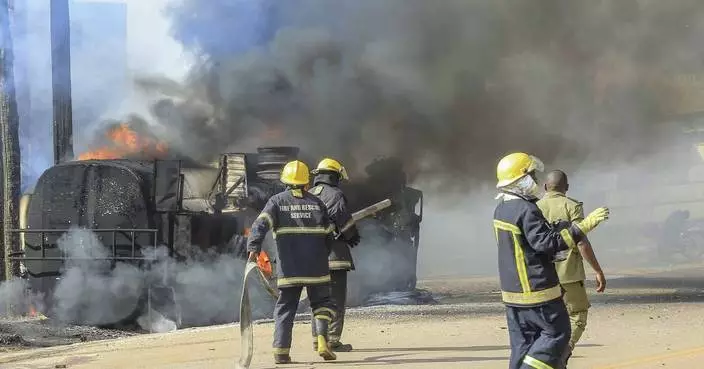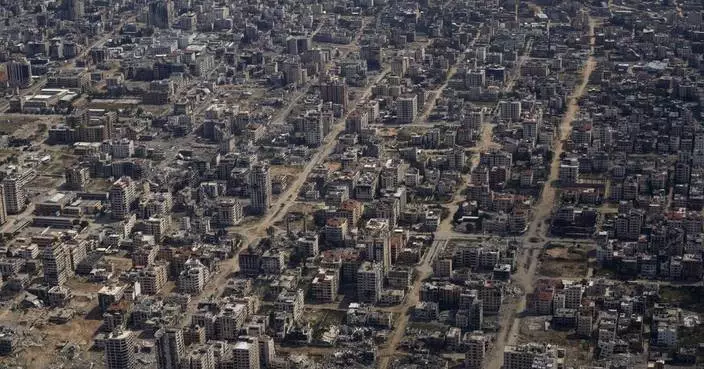BEIRUT (AP) — Nearly 16 hours after an Israeli airstrike hit across the street from Beirut’s main public hospital, rescuers were still removing debris Tuesday from the overcrowded slum area. An excavator was digging at one of the destroyed buildings, picking out twisted metal and bricks in search for bodies.
Residents standing on mounds of debris said an entire family remained missing under the rubble.
Mohammad Ibrahim, a Sudanese national, came looking for his brother. “His mobile phone is still ringing. We are trying to search for him,” he said. “I don’t know if he is dead or alive.”
Hours later, health officials said five bodies had been recovered from under the rubble. At least 18 people were killed, including four children, and at least 60 wounded in the strike that also caused damage across the street at the Rafik Hariri University Hospital, the capital’s main public medical facility.
Jihad Saadeh, director of the Rafik Hariri Hospital, said the strike broke several glass windows and the solar panels of the medical facility, which continued to operate despite the damage and the panic. None of the staff was injured.
Saadeh said the hospital received no warning of the impending strike, just a few meters (yards) across the street. Neither did the residents of the slum area, where several buildings were crammed and which houses several migrant workers as well as working class Lebanese.
The Israeli military said it struck a Hezbollah target, without elaborating. It added it had not targeted the hospital itself.
It was hard for rescue equipment to reach the area of clustered settlements and dusty narrow roads.
Nizar, one of the rescuers, said he had been at the site of the explosion since Monday night. “It was too dark and there was so much panic,” he said, giving only his first name in line with the rescue team’s regulations. “People didn’t understand yet what had happened.”
The overcrowded slum was covered in debris, furniture and remains of life poking out of the twisted metal and broken bricks. Residents who survived the massive explosion were still in shock, some still searching through the debris with their hands for their relatives or what is left of their lives. Gunmen stood guard at the site. The Lebanese Civil Defense said Tuesday five buildings were destroyed and 12 sustained severe damage. The dead included one Sudanese and at least one Syrian.
“This is a very crowded area; buildings are very close. The destruction is massive,” Nizar said, explaining that the scale of the damage made their rescue effort harder.
Across the street, the hospital was still treating a few of the injured. The morgue had received 13 bodies.
Hussein al-Ali, a nurse who was there when the attack happened, said it took him a few minutes to realize it was not the hospital that was hit. Dust and smoke covered the hospital lobby. The glass in the dialysis unit, the pharmacy and other rooms in the hospital was shattered. The false roof fell over his and his colleagues' heads.
“We were terrified. This is a crime,” said al-Ali. “It felt like judgement day.”
It took only minutes for the injured from across the street to start streaming in. Al-Ali said he had little time to breathe or reassure his terrified colleagues and the rattled patients.
“Staff and patients thought the strike was here. We fled outside as the injured were coming in,” he said. And when he was done admitting the injured, “we came out to carry our (killed) neighbors. They are our neighbors.”
Ola Eid survived the strike. She helped dig out her neighbors’ children from under the rubble, before realizing she herself was injured.
“The problem is we didn’t feel it. They didn’t inform us. We heard they want to strike al-Sahel hospital,” said Eid, bandaged and still in shock sitting at the hospital gate. Israel had hinted another hospital miles away could possibly be a target, alleging it is housing tunnels used by the Hezbollah militant group.
Eid, an actor, said she was playing with her neighbor’s kids when the first explosion hit. It knocked her to the floor and scattered the candy she was handing out to the kids. She stood up, not believing she was still alive, to find her neighbor’s kid soaked in blood. One was killed immediately; the other remained in intensive care.
“I looked ahead and saw the kids torn apart and hurt,” she said. “The gas canisters were on fire. I didn’t know what to do — put out the fire or remove the kids.”
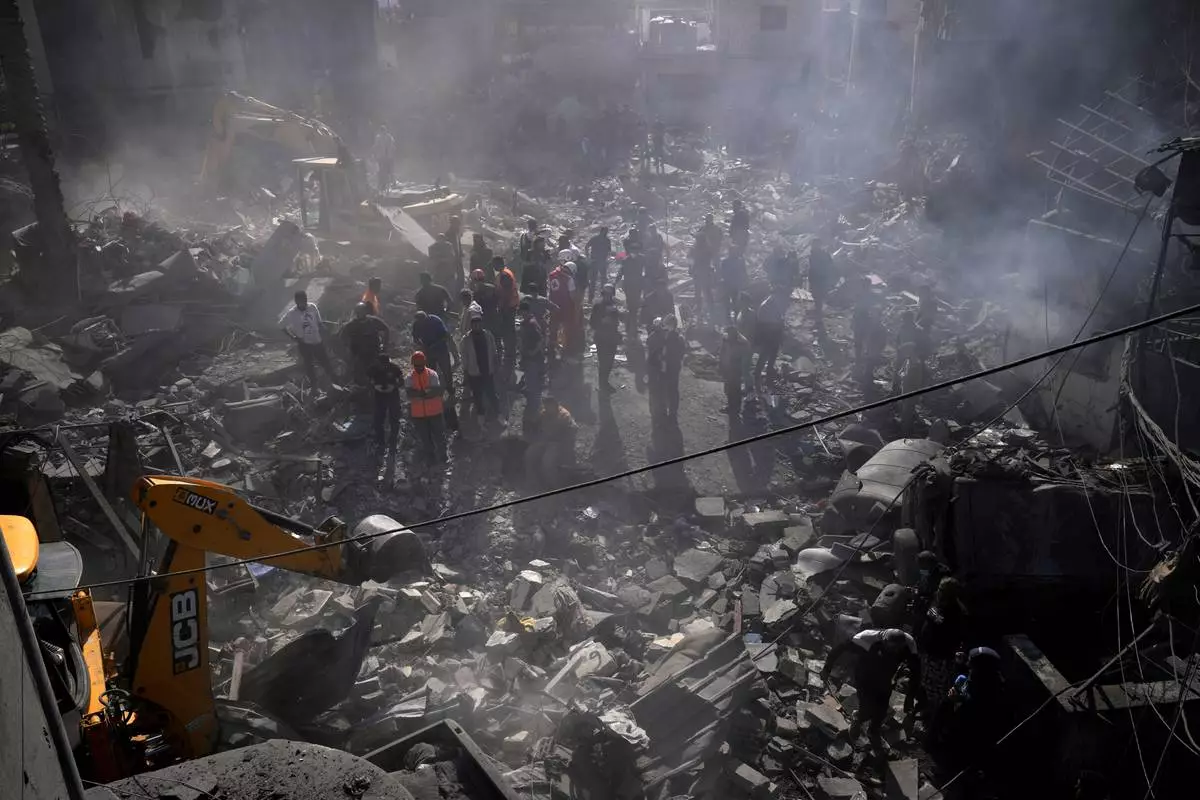
An excavator sifts through the rubble as rescue workers search for victims at the site of Israeli airstrikes that destroyed buildings, facing the city's main government hospital in a densely-populated neighborhood, in southern Beirut, Lebanon, Tuesday, Oct. 22, 2024. (AP Photo/Hussein Malla)
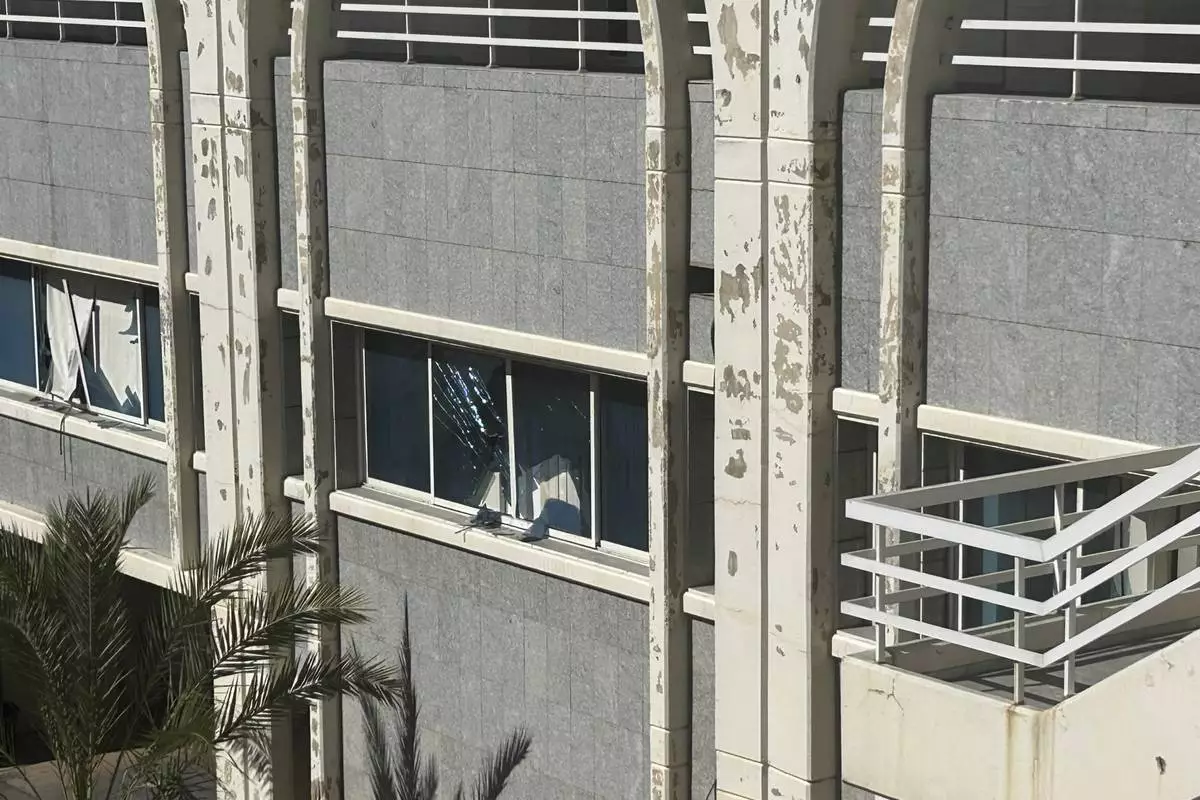
Broken window in the building of the Rafik Hariri University Hospital, following an overnight Israeli airstrike near the medical facility in southern Beirut, Lebanon, Tuesday, Oct. 22, 2024. (AP Photo/Sarah el-Deeb)
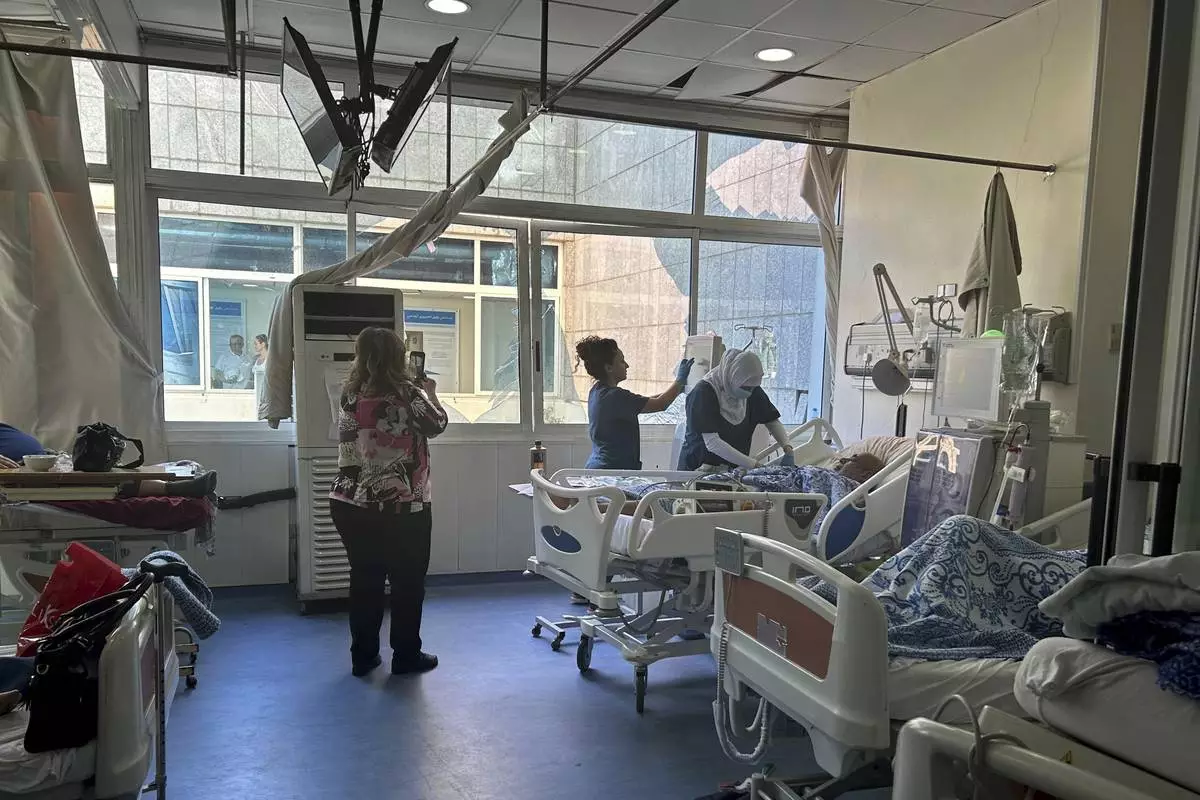
Patients receive treatment at the dialysis unit near broken window at the Rafik Hariri University Hospital, following an overnight Israeli airstrike near the medical facility in southern Beirut, Lebanon, Tuesday, Oct. 22, 2024. (AP Photo/Sarah el-Deeb)
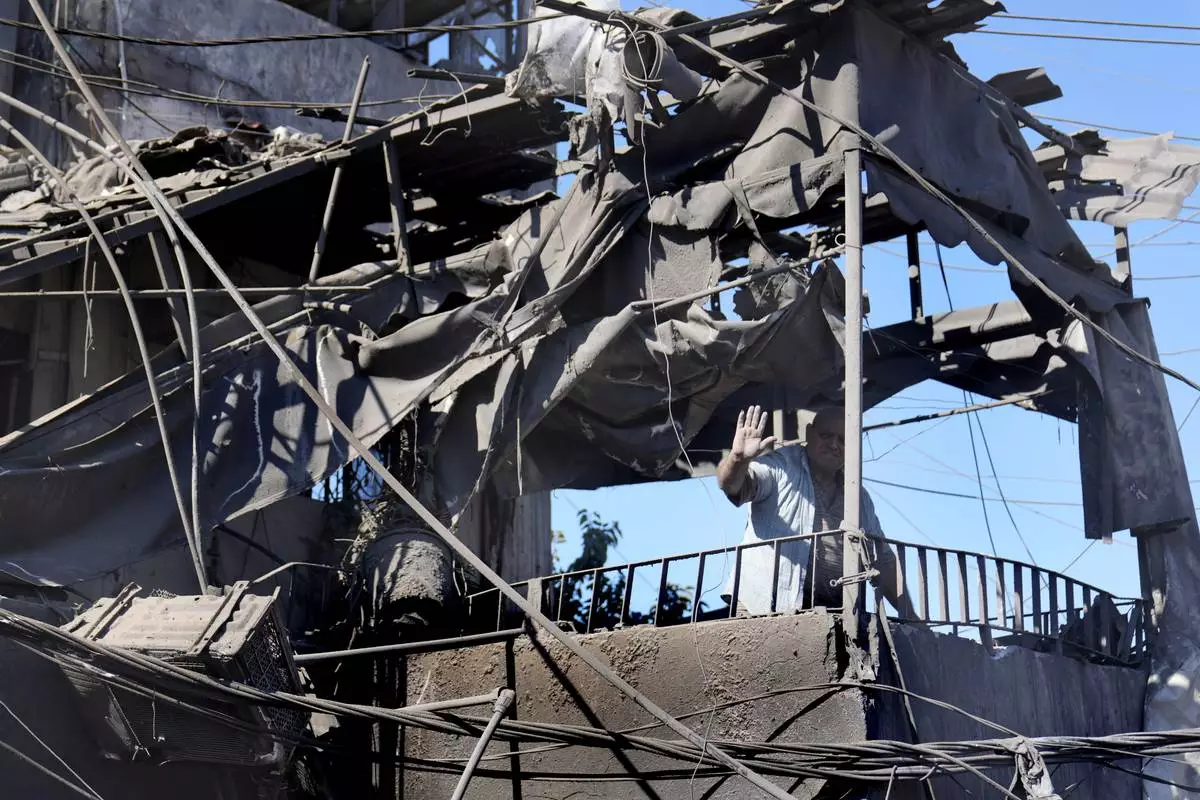
A man waves from his shattered house at the site of Israeli airstrikes that destroyed buildings facing the city's main government hospital in a densely-populated neighborhood, in southern Beirut, Lebanon, Tuesday, Oct. 22, 2024. (AP Photo/Hussein Malla)
LOS ANGELES (AP) — Fernando Valenzuela, the Mexican-born phenom for the Los Angeles Dodgers who inspired “Fernandomania” while winning the NL Cy Young Award and Rookie of the Year in 1981, has died. He was 63.
The team said he died Tuesday night at a Los Angeles hospital, but did not provide the cause or other details.
His death comes as the Dodgers prepare to open the World Series on Friday night at home against the New York Yankees. Baseball Commissioner Rob Manfred said Valenzuela would be honored during the series at Dodger Stadium.
Valenzuela had left his color commentator job on the Dodgers’ Spanish-language television broadcast in September without explanation. He was reported to have been hospitalized earlier this month. His job kept him as a regular at Dodger Stadium, where he held court in the press box dining room before games and remained popular with fans who sought him out for photos and autographs.
Valenzuela was one of the most dominant players of his era and a wildly popular figure in the 1980s, although he was never elected to the Baseball Hall of Fame. However, he is part of Cooperstown, which features several artifacts including a signed ball from his no-hitter in 1990.
“He is one of the most influential Dodgers ever and belongs on the Mount Rushmore of franchise heroes," Stan Kasten, team president and CEO, said in a statement. “He galvanized the fan base with the Fernandomania season of 1981 and has remained close to our hearts ever since, not only as a player but also as a broadcaster. He has left us all too soon.”
Valenzuela's rise from humble beginnings as the youngest of 12 children in Mexico and his feats on the mound made him hugely popular and influential in Los Angeles’ Latino community while helping attract new fans to Major League Baseball. Their fondness for him continued for years after his retirement.
“He consistently supported the growth of the game through the World Baseball Classic and at MLB events across his home country,” Manfred said in a statement. “As a member of the Dodger broadcasting team for more than 20 years, Fernando helped to reach a new generation of fans and cultivate their love of the game. Fernando will always remain a beloved figure in Dodger history and a special source of pride for the millions of Latino fans he inspired.”
In 1981, Valenzuela became the Dodgers’ opening day starter as a rookie after Jerry Reuss was injured 24 hours before his scheduled start. He shut out the Houston Astros 2-0 and began the season 8-0 with five shutouts and an ERA of 0.50. He became the first player to win a Cy Young and Rookie of the Year in the same season.
His performances created the delirium known as “Fernandomania” among Dodgers fans. The ABBA hit “Fernando” would play as he warmed up on the mound.
He was 13-7 and had a 2.48 ERA in his first season, which was shortened by a players’ strike.
Valenzuela was an All-Star selection every year from 1981-86, when he recorded 97 victories, 84 complete games, 1,258 strikeouts and a 2.97 ERA. He was 5-1 with a 2.00 ERA in eight postseason starts. He earned two Silver Slugger Awards and a Gold Glove.
Valenzuela’s no-hitter on June 29, 1990, a 6-0 victory against the St. Louis Cardinals at Dodger Stadium, was an emotional career highlight. He struck out seven and walked three.
“If you have a sombrero, throw it to the sky!” Hall of Fame broadcaster Vin Scully exclaimed in his game call.
Nicknamed “El Toro” by the fans, Valenzuela had an unorthodox and memorable pitching motion that included looking skyward at the apex of each windup. His repertoire included a screwball -- making him one of the few pitchers of his era who threw that pitch regularly. It was taught to him by teammate Bobby Castillo after the Dodgers felt Valenzuela, who wasn’t known as a hard thrower, needed another pitch.
Early in his Dodgers career, Valenzuela spoke little English and had trouble communicating with his catchers. Rookie Mike Scioscia learned Spanish and became Valenzuela’s personal catcher before becoming the team’s full-time catcher.
Valenzuela was a better-than-average hitter, with 10 career home runs.
Eventually, his pitching was compromised by nagging shoulder problems that kept him out of the 1988 postseason, when the Dodgers won the World Series.
The team released Valenzuela just before the 1991 season. He also pitched for the former California Angels, Baltimore Orioles, Philadelphia Phillies, San Diego Padres and St. Louis Cardinals.
He retired in 1997, going 141-116 with a 3.31 ERA in 11 seasons with the Dodgers. Overall, he was 173-153 with a 3.54 ERA in 17 seasons.
Valenzuela’s rise from his tiny hometown of Etchohuaquila in the Mexican state of Sonora to stardom in the U.S. was improbable. He was the youngest child in a large family who tagged along when his older brothers played baseball.
He signed his first pro contract at age 16, and soon began overpowering older players in the Mexican Central League.
In 1978, legendary Dodgers scout Mike Brito was in Mexico to watch a shortstop when Valenzuela entered the game as a reliever. He immediately commanded Brito’s attention and at age 18, Valenzuela signed with the Dodgers in 1979. He was sent to the California League that same year.
In 1980, Valenzuela was called up to the Dodgers in September and soon made his big league debut as a reliever.
He remains the only pitcher in MLB history to win the Cy Young and Rookie of the Year awards in the same season. The left-hander was the National League’s starting pitcher in the All-Star Game in 1981, the same year the Dodgers won the World Series.
He is the all-time major league leader in wins (173) and strikeouts (2,074) by a Mexican-born player.
During his career, he made the cover of Sports Illustrated and visited the White House.
In 2003, Valenzuela returned to the Dodgers as the Spanish-language radio color commentator for NL games. Twelve years later, he switched to the color commentator job on the team’s Spanish-language TV feed.
He was inducted into the Mexican Professional Baseball Hall of Fame in 2014. Five years later, the Mexican League retired Valenzuela’s No. 34 jersey. The Dodgers followed in 2023 after keeping his number out of circulation since he last pitched for the team in 1991. The team has a rule that requires a player to be in the Baseball Hall of Fame before having the Dodgers retire his number, but they made an exception for Valenzuela.
The Dodgers named Valenzuela as part of the “Legends of Dodger Baseball” in 2019 and inducted him into the team’s Ring of Honor in 2023.
He became a U.S. citizen in 2015.
Valenzuela served on the coaching staff for Mexico during the World Baseball Classic in 2006, 2009, 2013 and 2017. He was a part-owner of the Mexican League team Tigres de Quintana Roo, with son Fernando Jr. serving as team president and son Ricky serving as general manager. Fernando Jr. played in the San Diego Padres and Chicago White Sox organizations as a first baseman.
In addition to his sons, he is survived by his wife, Linda, who was a schoolteacher from Mexico whom he married in 1981, and daughters Linda and Maria as well as seven grandchildren.
AP MLB: https://apnews.com/hub/MLB
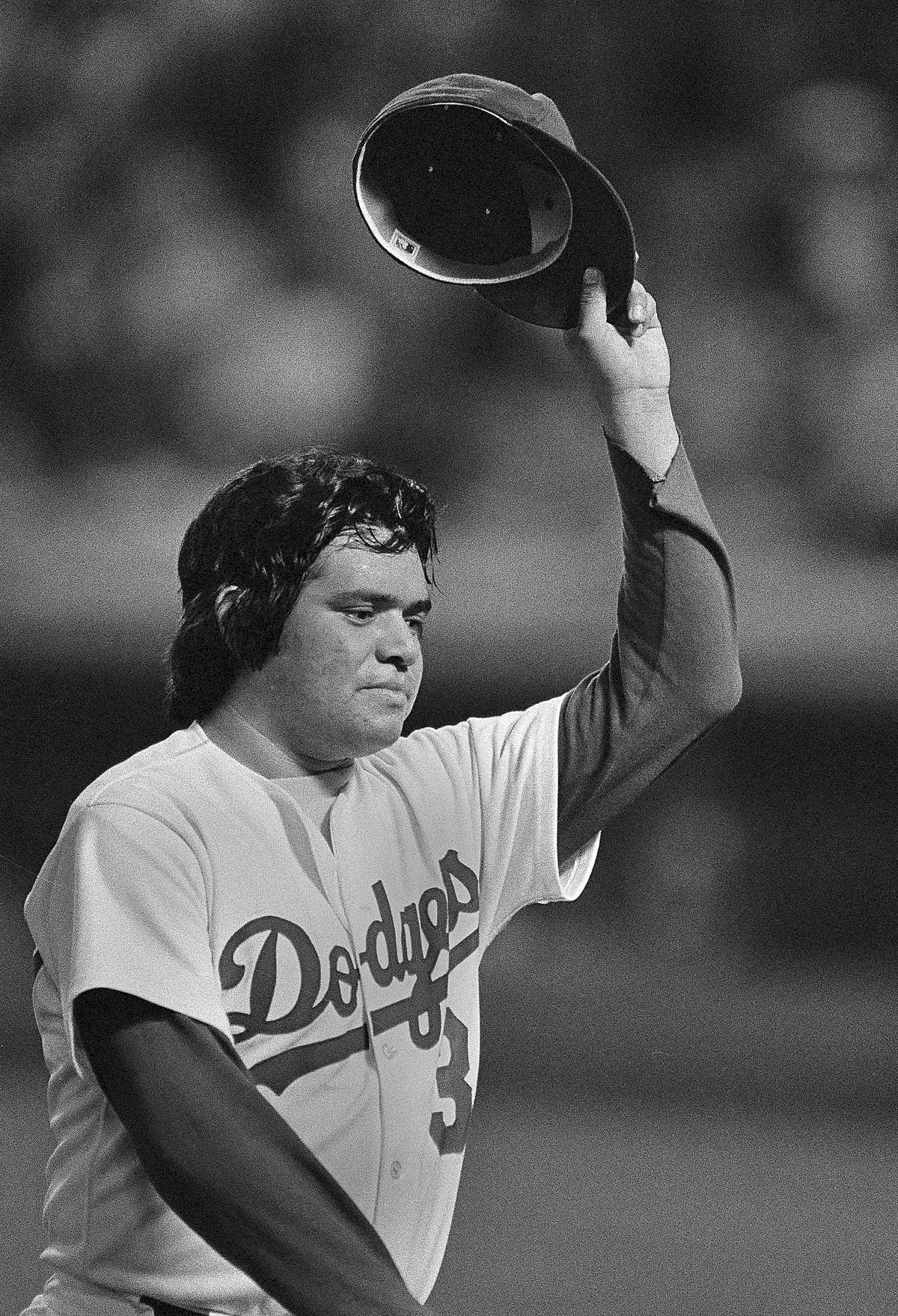
FILE - Los Angeles Dodger pitching sensation Fernando Valenzuela tips his hat to the crowd celebrating his equaling the major league record of eight shutouts by a rookie during a baseball game against the Atlanta Braves, Sept. 18, 1981, in Los Angeles. Fernando Valenzuela, the Mexican-born phenom for the Los Angeles Dodgers who inspired “Fernandomania” while winning the NL Cy Young Award and Rookie of the Year in 1981, has died Tuesday, Oct. 22, 2024.(AP Photo/Molenhouse, File)

FILE - Los Angeles Dodgers pitcher Fernando Valenzuela blows bubbles as he passes the time in the dugout during the rain delay before Game 3 of the National League playoffs with the Expos at Montreal, Oct. 18, 1981. Fernando Valenzuela, the Mexican-born phenom for the Los Angeles Dodgers who inspired “Fernandomania” while winning the NL Cy Young Award and Rookie of the Year in 1981, has died Tuesday, Oct. 22, 2024.(AP Photo/Rusty Kennedy, File)
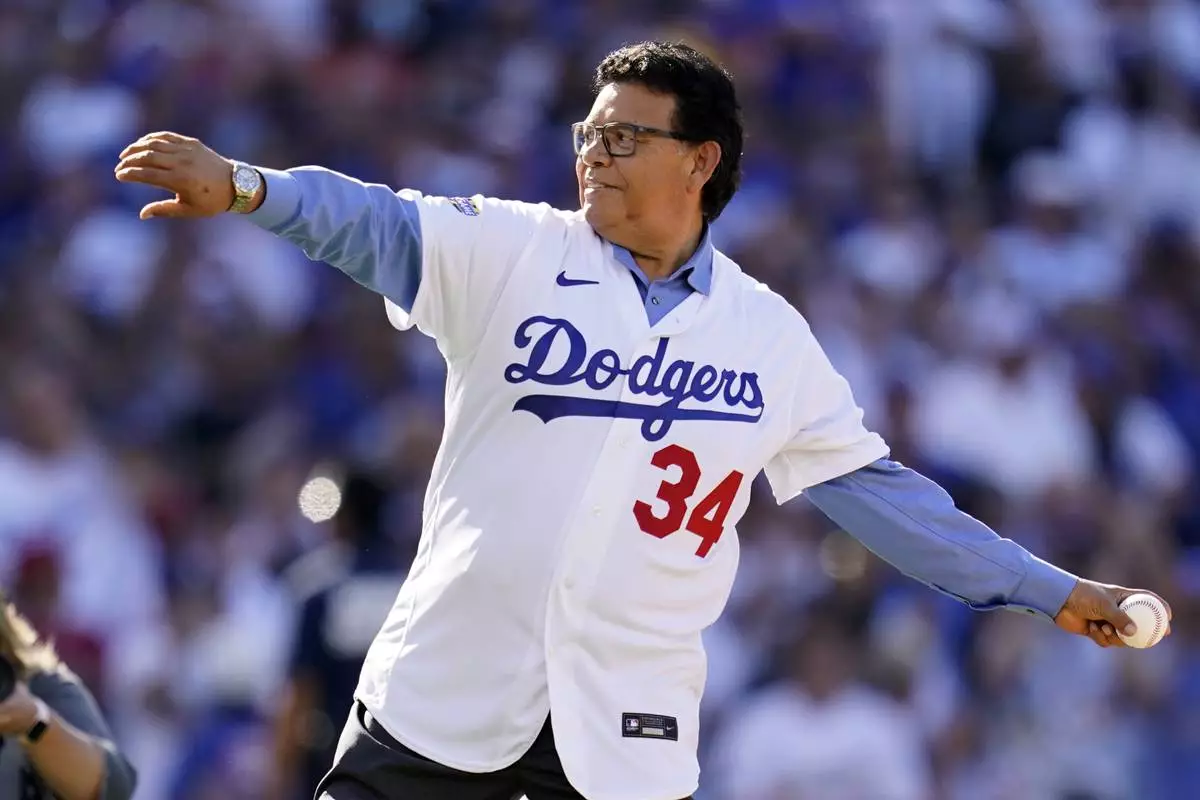
FILE - Former Los Angeles Dodgers pitcher Fernando Valenzuela throws the ceremonial first pitch during the MLB All-Star baseball game, July 19, 2022, in Los Angeles. Fernando Valenzuela, the Mexican-born phenom for the Los Angeles Dodgers who inspired “Fernandomania” while winning the NL Cy Young Award and Rookie of the Year in 1981, has died Tuesday, Oct. 22, 2024.(AP Photo/Abbie Parr, File)
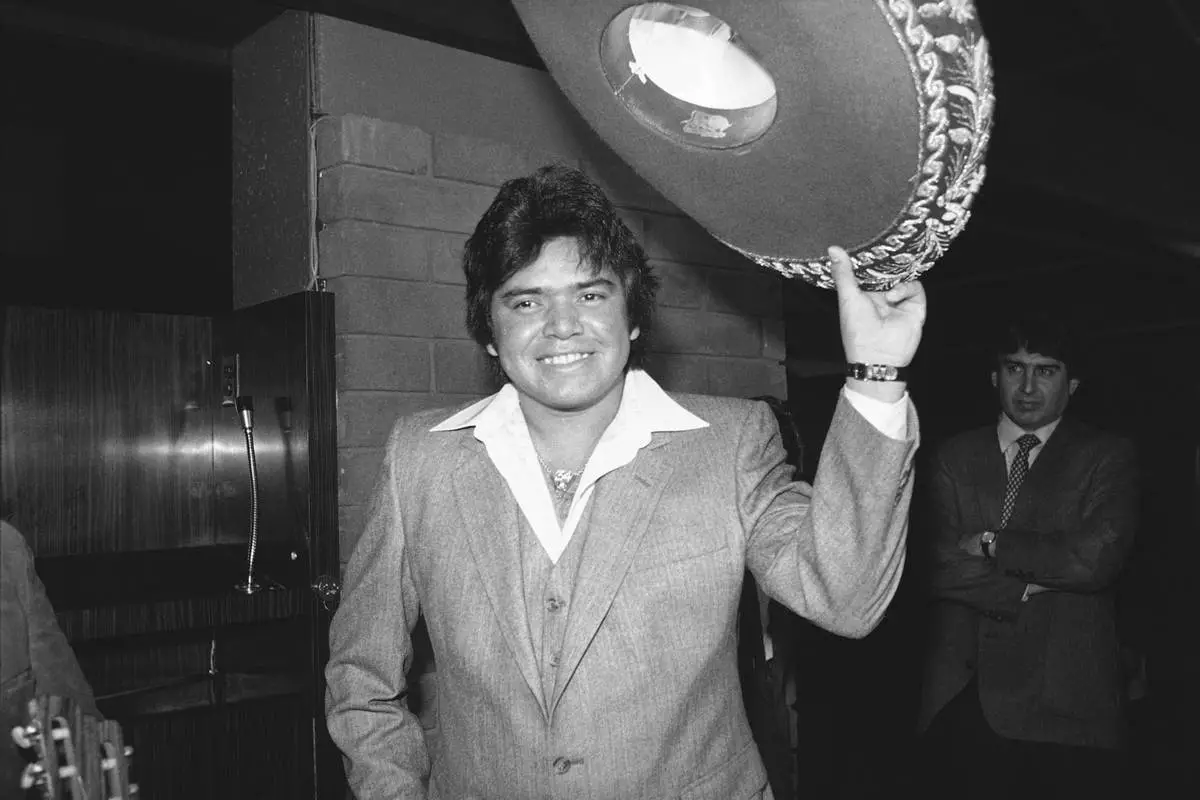
FILE - Los Angeles Dodger pitcher Fernando Valenzuela tips his sombrero at a news conference after he was named National League Rookie of the Year, Dec. 2, 1981, in Los Angeles. Fernando Valenzuela, the Mexican-born phenom for the Los Angeles Dodgers who inspired “Fernandomania” while winning the NL Cy Young Award and Rookie of the Year in 1981, has died Tuesday, Oct. 22, 2024.(AP Photo/Wally Fong, File)
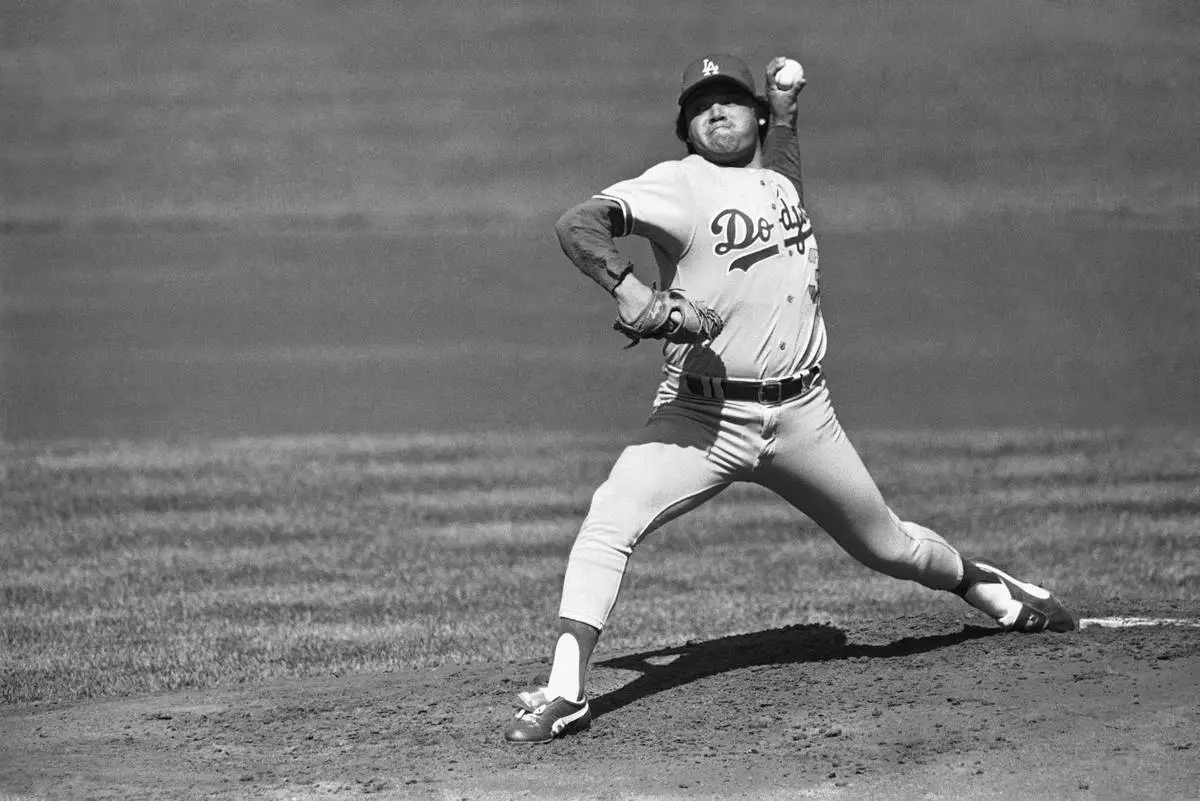
FILE - Los Angeles Dodgers pitcher Fernando Valenzuela pitches against a San Francisco Giants batter during the first inning at Candlestick Park, Oct. 3, 1982, in San Francisco. Fernando Valenzuela, the Mexican-born phenom for the Los Angeles Dodgers who inspired “Fernandomania” while winning the NL Cy Young Award and Rookie of the Year in 1981, has died Tuesday, Oct. 22, 2024. (AP Photo, File)
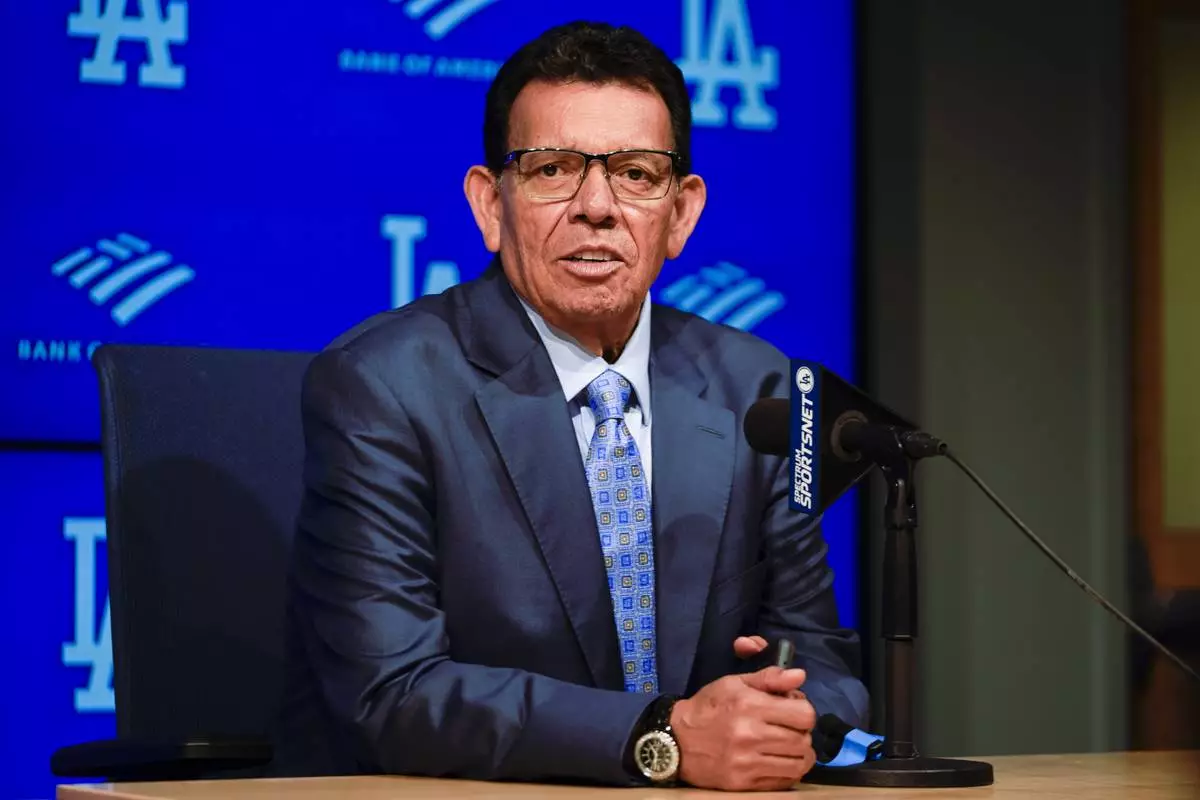
FILE - Former Los Angeles Dodgers pitcher Fernando Valenzuela speaks during a news conference ahead of his jersey retirement ceremony at a baseball game between the Dodgers and the Colorado Rockies, Aug. 11, 2023, in Los Angeles. Fernando Valenzuela, the Mexican-born phenom for the Los Angeles Dodgers who inspired “Fernandomania” while winning the NL Cy Young Award and Rookie of the Year in 1981, has died Tuesday, Oct. 22, 2024. (AP Photo/Ryan Sun, File)

FILE - Fernando Valenzuela throws to the plate during the Old-Timers baseball game, June 8, 2013, in Los Angeles. Fernando Valenzuela, the Mexican-born phenom for the Los Angeles Dodgers who inspired “Fernandomania” while winning the NL Cy Young Award and Rookie of the Year in 1981, has died Tuesday, Oct. 22, 2024. (AP Photo/Mark J. Terrill, File)






